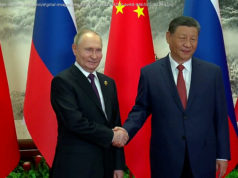North Korean artillery, unconventional weapons could cause catastrophic casualties if war breaks out.
WASHINGTON — War on the Korean Peninsula would be catastrophic.
How much blood would be shed and how nasty the fighting would be are the outstanding questions, according to Defense estimates and experts.
Even a conventional war could kill tens of thousands of civilians in its first days if thousands of North Korean artillery shells fell on the 10 million citizens of Seoul, 35 miles from the demilitarized zone. The number of dead and wounded multiply if war goes nuclear, as North Korea has threatened.
In November, Defense Secretary Jim Mattis offered a lethal promise in remarks to reporters, suggesting the toll in North Korea could be higher.
“Make no mistake, any attack on the United States or our allies will be defeated, and any use of nuclear weapons by the North will be met with a massive military response that is effective and overwhelming,” Mattis said.
Avoiding catastrophic war has gained new currency since President Trump announced Thursday a willingness to negotiate with North Korean leader Kim Jong Un over its nuclear weapons program. For the moment, talking makes that war seem less likely.
Should talks fail, war gets sparked, and North Korea launches a conventional or nuclear strike on the United States or its allies, massive casualties are assured.
The U. S. military and South Korean allies have more sophisticated weaponry, including stealthy warplanes, than North Korea and would be expected to destroy Kim’s forces in time. But the toll on civilians, including the 200,000 U. S. citizens in South Korea, would be shocking, according to Pentagon estimates. The loss of life for U. S. troops would likely be worse than 33,000 who perished in the Korean War.
There are about 28,000 U. S. troops stationed in South Korea, and more would be deployed to the peninsula in the event of war.
Advances in medical treatment, including stopping blood loss and swift evacuation to sophisticated care, have meant American troops are much more likely to survive wounds than their predecessors, Tanisha Fazal, an associate professor of political science at the University of Minnesota, said in an email.
Helicopters with trained medical crews have swooped in over the battlefields of Iraq and Afghanistan and generally ferried the wounded to hospitals within the “golden hour,” the Pentagon’s goal for swift care.
“But U. S. air superiority has not been challenged in these theaters, thus enabling air evacuation, Fazal said. “This would likely not be the case in a new Korean War. In particular, North Korean artillery could pose a significant challenge to U. S. air evacuation.”
The willingness of North Korea to use chemical and biological weapons, requiring U. S. troops to use cumbersome protective gear, raises the risks, Fazal said.
“Another major concern were a new conflict to break out on the Korean Peninsula would be how to deal with possible chemical or nuclear weapon attacks on U. S. military personnel,” Fazal said.
In 2003, U. S. troops prepared for the use of chemical weapons by Saddam Hussein before the invasion of Iraq. Ultimately, an unexpected hazard, homemade bombs known as improvised explosive devices, became the No. 1 killer of U. S. troops, showing that predicting how war will unfold is difficult if not impossible.






